You just can’t compare the flavor and texture of homegrown baby potatoes to those you purchase in the store. With today’s tips, you will be able to plant and grow your own delicious crop of new potatoes this growing season with ease!
New potatoes are not a specific variety of potatoes. In fact, they are actually any type of potato that you harvest before they reach maturity. You can also refer to them as baby potatoes.
Because you harvest before reaching full maturity, new potatoes are at their peak flavor. Once you get that timing down, you might never go back to mature potatoes again, let alone store-bought spuds!
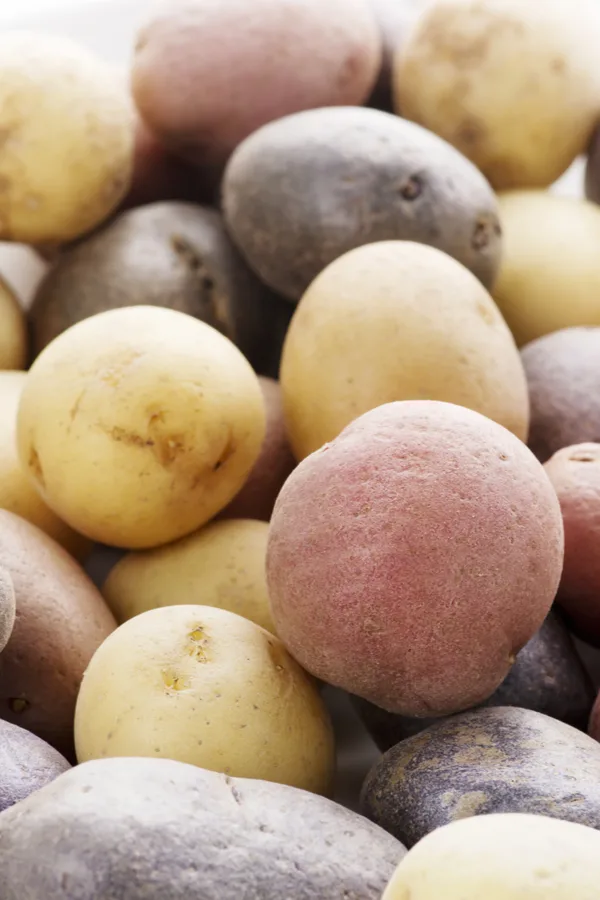
While you might not think it, potatoes are actually one of the most nutritious vegetables available. New potatoes are full of potassium, magnesium, vitamins, and antioxidants. In addition, potatoes contain a large amount of fiber, which will leave you feeling full and satisfied longer.
When prepared properly (i.e., not fried or covered in unhealthy toppings), potatoes are even cholesterol and fat free. Their numerous health benefits added to their delicious flavor and ease of growing make baby potatoes a great addition to any garden space.
Varieties of New Potatoes – How To Grow New Potatoes
Potatoes are root vegetables that are a member of the nightshade family. While there are over 100 different types of seed potatoes, you want to make sure to choose a variety that grows well in your climate.
Also, take into consideration how you plan to eat the potatoes to help you decide what varieties to plant. Potato varieties that are high in starch content are great for deep frying, baking, or mashing. A good example of this is a russet potato, which has a high starch content.
Medium starchy potatoes are best for baking, roasting, grilling, and steaming. Long white potatoes, red potatoes, and round white potatoes are all examples of medium starchy potatoes. Just a heads up, red potatoes are often called “new potatoes” due to the fact that they are smaller in size even when they are mature.
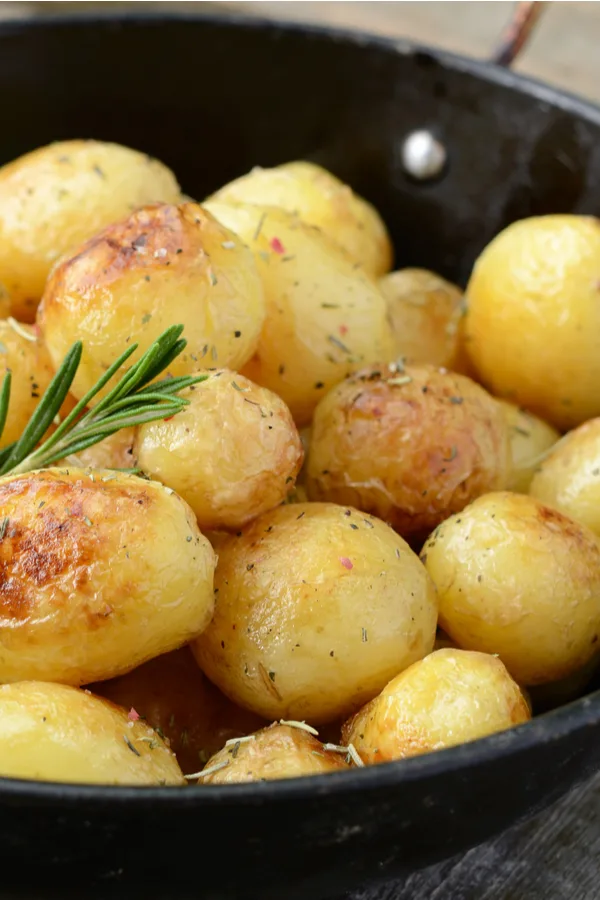
Varieties of potatoes with low-starch content are perfect for stews, sauteed, salads, boiling, grilling, and roasting. Fingerlings and purple potatoes are great examples of low-starch potatoes. They typically feature thinner skins and a buttery-like texture.
How To Plant, Grow, And Maintain New Potatoes
You do not plant potatoes from traditional seed as you do with most of the vegetables in your garden. Instead, you use “seed potatoes” in order to get your crop off to a great start.
Seed potatoes are essentially chunks of mature potatoes that contain “eyes” or buds. You can find seed potatoes at most greenhouses, garden nurseries or even online.
Choose a seed potato variety that is disease-resistant and that already has eyes growing on them.
Note that the potatoes you purchase in the grocery store aren’t the best source for growing potatoes as they often aren’t the right variety for growing in your climate. Also, they may have been sprayed with fertilizers, growth inhibitors, and other chemicals that can affect the plant’s ability to grow.
Soil Requirements for New Potatoes
Potatoes prefer soil that is slightly acidic. Because they are root vegetables, potatoes need very loose and well-draining soil in order to grow properly.
If you have heavy clay-like soil, you need to amend it with plenty of compost and other organic matter. You can also mix in sand to allow for better drainage as well. If you allow seed potatoes to stay wet for too long, they will likely rot.
Planting Potatoes – How To Plant & Grow New Potatoes
Choosing The Right Planting Time Frame
Potatoes are hardy in almost all Growing Zone in the US and you can plant typically as soon as the soil is workable. However, when you choose to plant will depend on your location and the soil temperature.
For best results, aim for planting seed potatoes around two weeks before your Last Spring Frost Date or once your soil is around 45 to 55º Fahrenheit (7 to 13º Celsius). Do not plant if your soil is damp and overly wet.
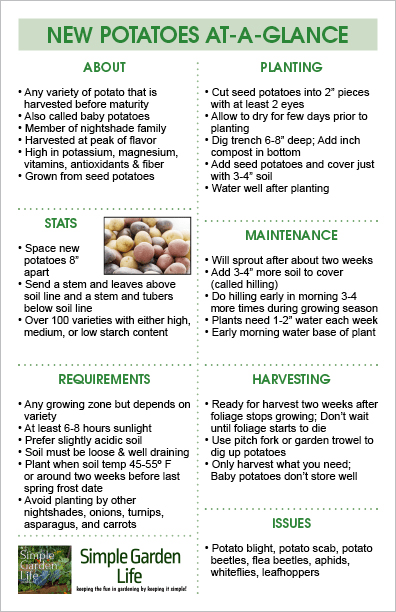
There are many different folklore traditions of when you should start potatoes. Some state that you should plant your potatoes on Good Friday while others choose St. Patrick’s Day. Yet others state that you need to wait until dandelions start to appear in your yard prior to planting.
Location, Location, Location
Choose a location that receives at least 6 to 8 hours of full sun. Avoid planting potatoes near other nightshade crops (such as peppers and tomatoes). In addition, do not plant in soil that grew nightshade crops in the last two years.
Some crops such as asparagus, carrots, and other root vegetables can actually stunt the growth of potato plants, so avoid those crops as well. Lastly, be sure to keep potatoes away from fruit trees, brassicas, cucumbers, and squash as well.
Great crops to plant next to potatoes include turnips, alyssum, marigolds and nasturtiums. These flowers look great and help the potatoes stave of disease and pests.
Prepping The Seed Potatoes – How To Plant And Grow New Potatoes
It’s best if you don’t plant your seed potatoes immediately after purchasing them. Expose the potatoes to sunlight and the air for a week or two to allow the eyes to sprout slightly. Keep the potatoes in a dry, sunny location during this time.
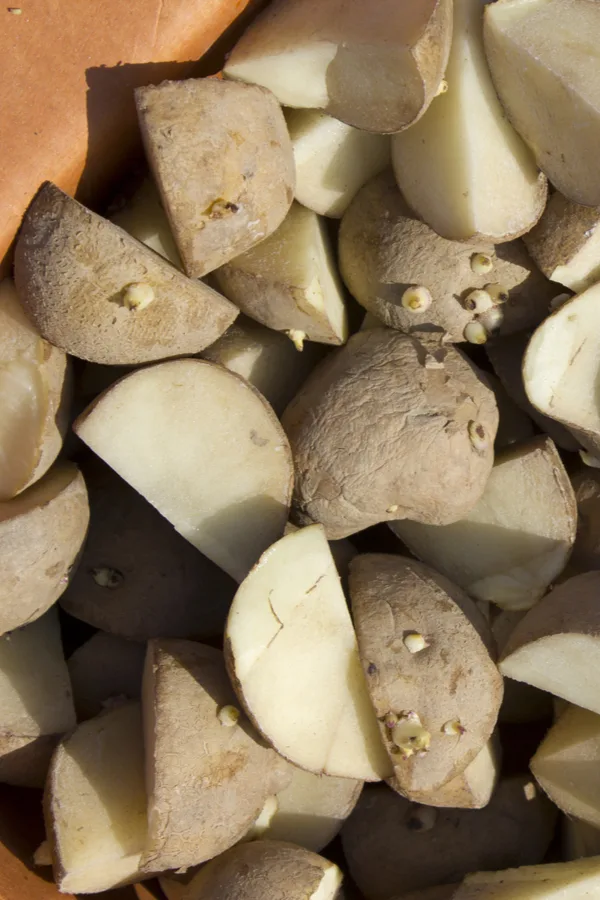
If you have larger seed potatoes, cut them into roughly two-inch by two-inch pieces a few days prior to planting to allow the cuts to dry slightly. Ensure that each piece has at least two eyes. You can plant smaller seed potatoes whole or cut them in half.
Planting Seed Potatoes
New potatoes grow best in trenches that will eventually be turned into mounds as the growing season goes along. Create a trench that is around 8 to 10 inches deep. Add an inch or two of compost into the bottom of the trench. Place each seed potato piece into the trench with the cut side down.
The amount of space that you put between the potatoes will vary slightly depending on the potato variety. For new baby potatoes, a width of around 8 inches should be more than sufficient. (For mature potatoes, the spacing increases to around 12 to 15 inches apart.) Water newly planted potatoes immediately after planting.
To begin with, only cover the seed potatoes with about 3 to 4 inches of soil. The potatoes should begin to sprout about two weeks after planting.
Once the potato sprouts are a few inches above the soil, add 3 to 4 inches of more soil, covering up to just below the top of the foliage. This process of adding more soil is called “hilling.”
Long-Term Care – How To Grow and Maintain New Potatoes
Hilling Potatoes
As a potato plant grows, it will produce a main stem and several leaves above the surface of the soil line. Below the soil surface, tubers will form along another stem.
These tubers are the future potatoes, and they are very sensitive to sunlight. If exposed for too long, they will start to turn green and produce solanine, which will make the potatoes inedible and potentially toxic.
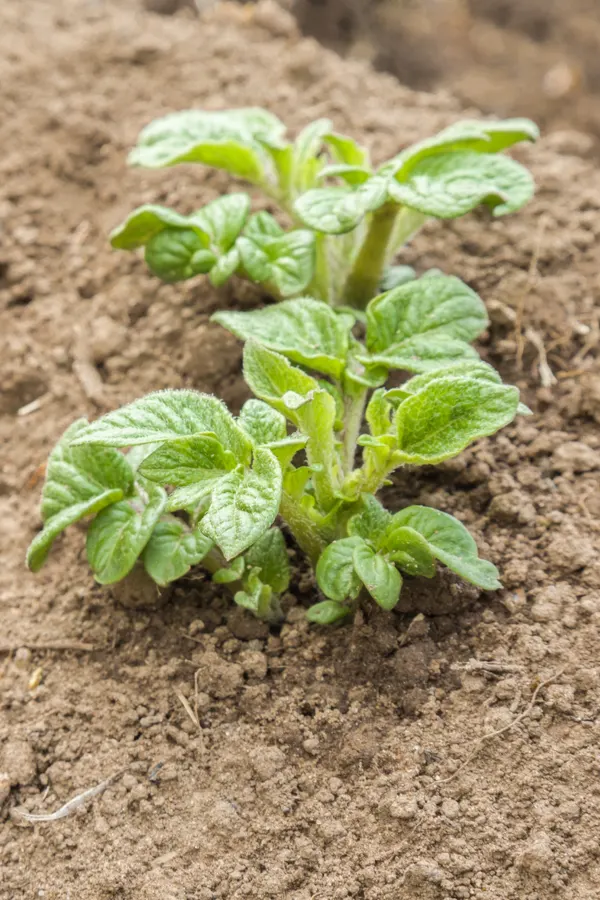
To prevent this from happening, the tubers need to be buried underneath a mound of soil. This hilling will need to be done about three to four times throughout the growing season. Preform hilling early in the morning before the heat of the day has caused the foliage to droop.
Watering – How To Plant And Grow New Potatoes
As plants start to grow, you should water them around one to two inches each week. If you receive less than that in rainfall, you will need to hand water. Again, be sure that the soil drains well. Water early in the morning at the soil line to help keep the foliage dry.
Harvesting New Potatoes
Baby potatoes can be ready for harvest around two weeks after their foliage stops growing. This is typically around 3 months after planting. If you wait until the foliage dies, then you have waited too long for new potatoes and will likely have mature potatoes instead.
It is easiest to harvest the potatoes when the soil is dry, so stop watering a week or two in advance. You can use either a pitchfork, shovel, or a garden trowel to gently dig up the baby potatoes.
Unlike mature potatoes, new potatoes do not last long once they have been harvested, so only take what you are going to use in the next meal or two. Once you taste them, you will be coming back for more!
Pests & Issues – How To Plant & Grow New Potatoes
As with most vegetables and plants, there are several pests and diseases that can become a problem with a potato crop. However, with proper management, you can still have an amazing harvest.
Typical pests include aphids, whiteflies, and leafhoppers. Potato beetles are also a nuisance, but the adults can be killed by knocking them off into a container of soapy water. Once you start to see an infestation of any sort, work quickly to eliminate the insects before they become a bigger issue.
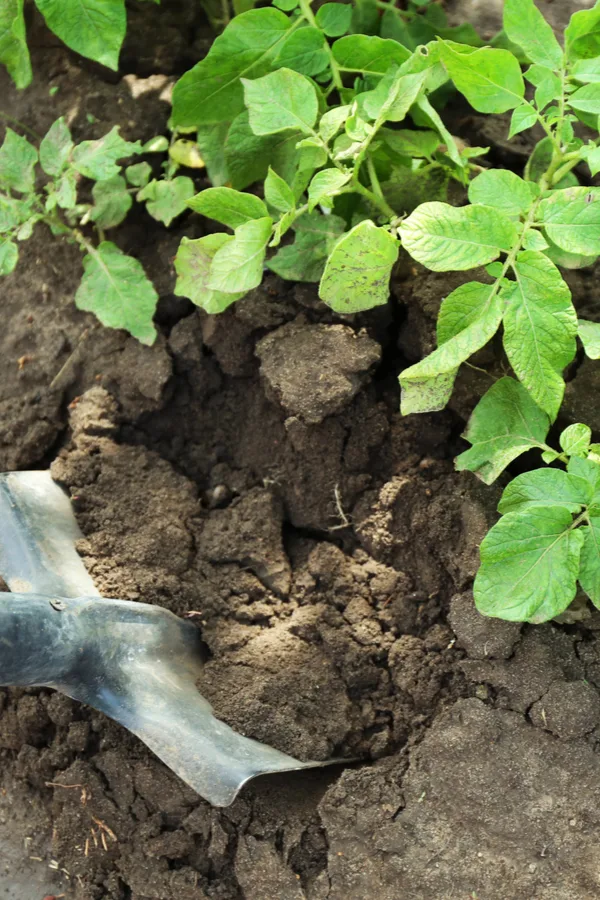
One of the most common issues with potatoes is potato blight. It is essentially the same virus that affects peppers and tomato crops. This virus begins on the lower leaves and causes white fuzzy spots on the underside of the leaves and gray circles on the top of the foliage.
Eventually, the leaves will dry out and die. Once a plant has it, the best remedy unfortunately is to pull up and destroy any infected plants. Do not add these plants to your compost pile.
Potato scab and soft rot are two other issues that can occur with potato crops. The best bet cure for almost all issues is prevention. Purchase a seed potato variety that is resistant to diseases and certified to be disease free.
Also, make sure to maintain proper spacing when planting to allow plenty of airflow. Some insect infestations can be avoided by planting companion plants and ensuring proper crop rotation.
To Conclude…
There is nothing like planting, growing, and harvesting your very own crop of delicious new potatoes. With a little early prevention and some simple hilling throughout the growing season, you will be enjoying a delicious harvest of these baby potatoes in no time at all!
Feel free to download, print out, or save the above New Potato At-A-Glance sheet. Sizing is for half letter printing but you can scale needed.
Follow Our Facebook Page For Even More Great Tips! Simple Garden Life Facebook Page
Simple Garden Life is a website dedicated to keeping gardening fun, simple and enjoyable! We publish two new articles each week along with a new garden podcast episode every two weeks. This article may contain affiliate links.
